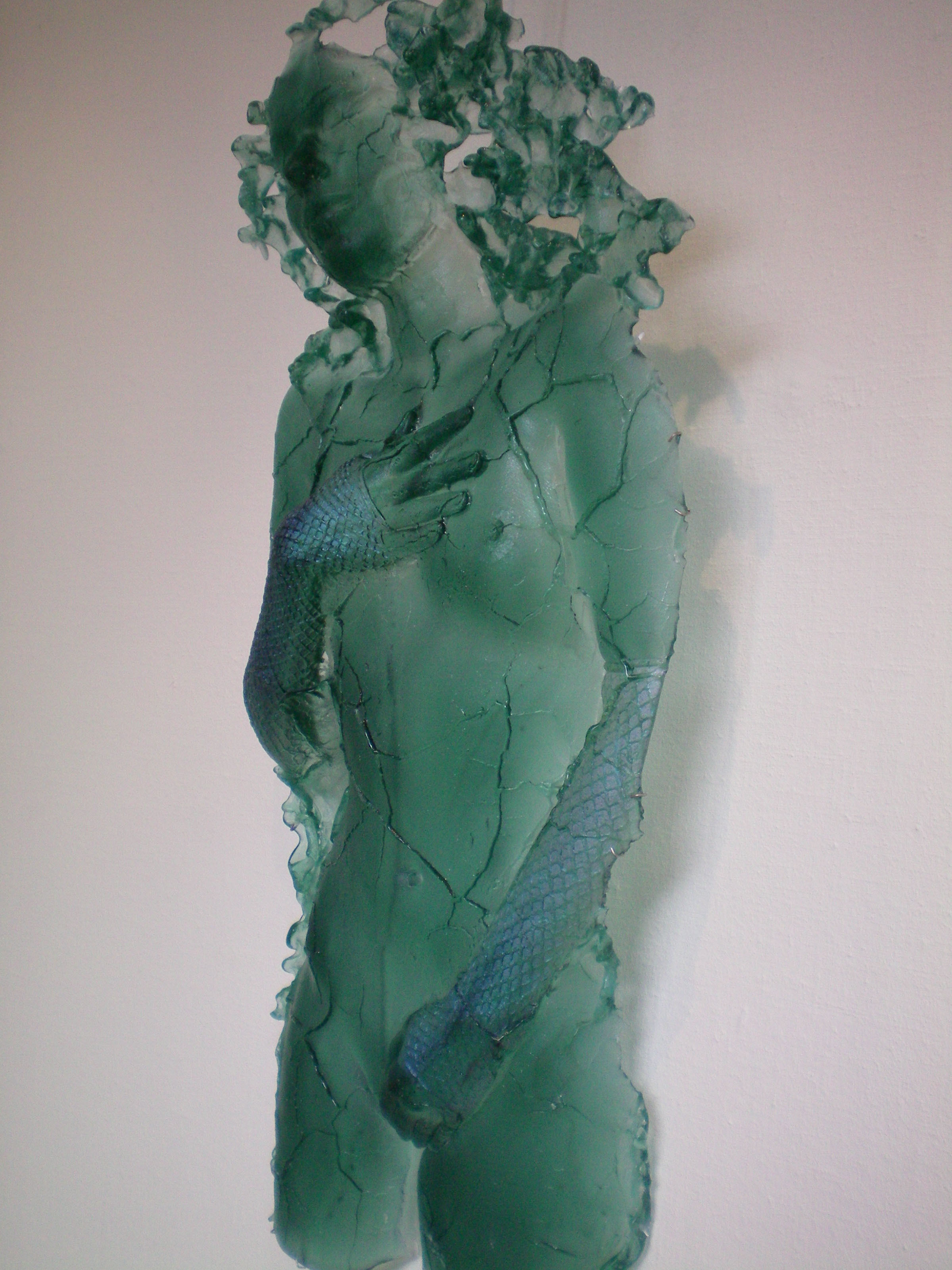Many glass artists are driven by the subject of water and the worlds encompassed inside of its bodies. In the 19th century, Leopold and Rudolph Blaschka studied and made extensive drawings of specimens they wanted to recreate for university study, and in addition to fruits and flowers, made realistic marine invertebrates from glass. A collection of their invertebrates is housed at Cornell University in Ithaca, NY, and these extraordinary sculptures can also be seen on a 37-page online gallery on the Cornell website. Years ago, I had the rare opportunity to flamework on the Corning Museum of Glass’s functional replica of the Blaschka’s bellows-operated torch and workbench, managing to only create a small leaf or flower petal with its alcohol-burning flame. The size of the fire the Blaschkas worked with is much smaller than the gas and oxygen burning flame contemporary flameworkers are accustomed to, so I can attest that perfecting this process and completing the collection was no small accomplishment. Assembling these lifelike pieces with that technology in the late 1800s was certainly a labor of love. Though the Blaschkas were eventually contracted to make glass specimen for universities, the initial motivation to make these pieces must have been fueled by relentless inspiration.
Of course, the inspiration of the sea in glass art did not begin or end with the Blaschkas. The list of today's glass artists producing work within this theme is an extensive one. Countless artists make work in either two or three dimensions, both representational and expressive, of sea organisms or the nature of water. As Dale Chihuly said in his artist statement about his Seaform series, “Glass itself, of course, is so much like water. If you let it go on its own, it almost ends up looking like something that came from the sea.” Both glass and water are transparent, and when glass is in its liquid state, the properties of adhesion found in water apply, as hot glass sticks to other bits of hot glass. Further, objects can be immersed in both water and glass — Richard Satava’s jellyfish, for example, appear to be swimming in a pool of water as they are encased within clear glass. Additionally, when it comes to creatures that reside in the sea, the colors and textures of these specimens provides endless possibilities for color combinations and surface treatments. Glass artists with fervor for the organic can also enthusiastically approach the plethora of shapes, curves, and appendages that are characteristic to underwater species. It is clear that innumerable idiosyncrasies of marine life gives creative minds much to consider.
In the exhibition “Glass Creatures” at Galerie B in Sinzheim/Baden-Baden, Germany, Susan Leibold is added to the ranks of artists inspired by sea life. Liebold, a German artist working out of a former gasworks building in Germany's Thuringian Forest, is surrounded by nature that informs her art. In the past, she has created objects such as mushroom and jellyfish, but in “Glass Creatures”, she takes microscopic biological creatures and transforms them into even more bizarre shapes. This approach is similar to that of Steffen Dam, whose forms encased in clear glass cylinders and squares come from his imagination, and do not actually exist in the sea (to our knowledge at least, since a large portion of oceanic life has yet to be discovered.) Liebold’s delicate sculptures change with the type of light in which they are viewed. Her objects are clear in white light, but glow under ultraviolet light, possibly a nod to bioluminescence that occurs naturally in organisms living in the deep sea.
Also featured in this dual exhibition is Mari Meszaros, whose cast glass sculptures, which are either free standing or can be hung on a wall, are often fragments of the female form. She is interested in the parts of a whole and transforming human bodies into objects to serve as “a future documentation of their current existence” – almost like a fossil record of humans. Her technique of casting the objects makes them compact and sturdy, despite being characteristically fragile. Meszaros eloquently says she uses glass as her medium “because it is as frail as man and as strong as mankind.”
IF YOU GO:
"Glass Creatures" Susan Leibold and Mari Meszaros Through September 30, 2014Galerie B
Bergstraße 19
76547 Sinzheim Baden-Baden, Germany
Tel: + 49 7221.85585
Website: http://www.galerieb.de/




